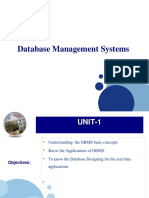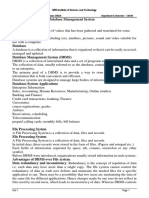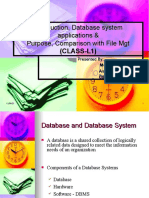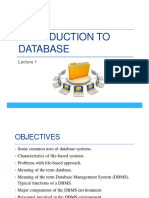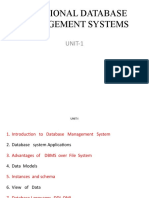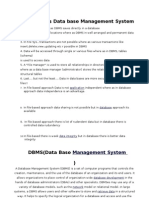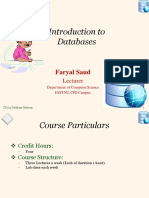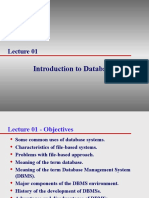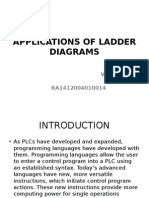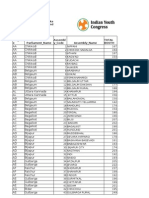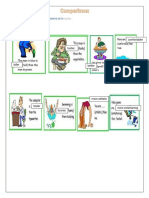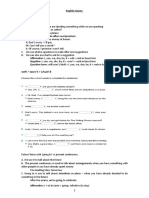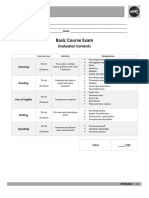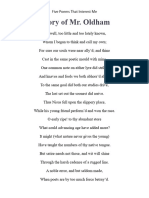0% found this document useful (0 votes)
16 views47 pagesIntroduction To Dbms & File Systems
The document provides an overview of Database Management Systems (DBMS), including basic concepts, applications, and database design principles. It outlines the objectives and outcomes for students learning about DBMS, as well as the advantages and actions of DBMS compared to traditional file systems. Additionally, it discusses the roles of database administrators and the importance of data integrity, security, and efficient query processing.
Uploaded by
SANDEEP PANDUCopyright
© © All Rights Reserved
We take content rights seriously. If you suspect this is your content, claim it here.
Available Formats
Download as PPTX, PDF, TXT or read online on Scribd
0% found this document useful (0 votes)
16 views47 pagesIntroduction To Dbms & File Systems
The document provides an overview of Database Management Systems (DBMS), including basic concepts, applications, and database design principles. It outlines the objectives and outcomes for students learning about DBMS, as well as the advantages and actions of DBMS compared to traditional file systems. Additionally, it discusses the roles of database administrators and the importance of data integrity, security, and efficient query processing.
Uploaded by
SANDEEP PANDUCopyright
© © All Rights Reserved
We take content rights seriously. If you suspect this is your content, claim it here.
Available Formats
Download as PPTX, PDF, TXT or read online on Scribd
/ 47
